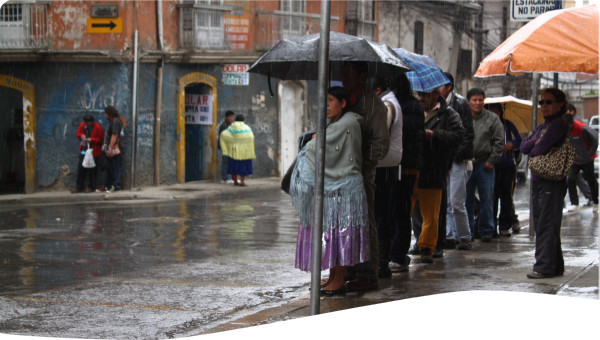Gender relations and gender roles are two interrelated but distinct concepts. Gender relations refer to ways in which society defines rights, responsibilities, and identities of men and women in relation to one another, in all spheres of life, and at the intersection of other factors such as ethnicity, age, class, religion, and geographical location (Tool B5.03). Gender relations, in turn, determine entitlement systems, divisions of labour and employment opportunities, patterns of production, and power sharing at all levels. Gender roles include productive and reproductive roles, community managing roles, and community or politics roles related to decision-making processes. The unequal value placed on roles of women compared with men is mainly responsible for their inferior status and the persistent gender discrimination they experience. Gender analysis provides the basis for addressing inequalities in policies, programmes, and projects, and can be conducted at multiple levels (household, community, and national), across different life stages and in the various roles men and women play.
Different types of gender analyses can be conducted:
- Context analysis screens and assesses a number of socio-economic patterns that influence how men and women make a living, their strategies for coping with challenges, and their options for development (Maobe and Atela, 2021).
- Gender-sensitive stakeholder analysis aims at identifying the male and female stakeholders or institutions/groups to be involved in the project; establishes how a problem affects different stakeholders and their views on what will contribute to solving problems; determines their priorities and decides how to best address their interests and needs; overcomes the constraints on their participation or access to the project's benefits; and finds out how different male and female stakeholders are likely to affect or be affected by the project, in order to make appropriate decisions on involving each stakeholder (Diamond and Lellement, 2014).
- Livelihood analysis tries to answer the questions of who does what, who uses what, and who controls what. It allows for learning about the activities of different people and their relative access to resources for basic needs and income, as well as their sources of expenditures and income.
- Gender-sensitive needs assessment involves determining the specific needs and priorities of different socio-economic groups, setting priorities for action, collecting data disaggregated by sex and age for planning, and determining the anticipated impact of the project on the most vulnerable subjects, both men and women (Kohler et al., 2019).
For all these types of analysis, using participatory tools is highly recommended in order to collect sex-disaggregated data (Tool C5.02), ensure context specific data collection methods, include male and female participants to help prevent biases, engage the intended beneficiaries from the start, and also give voice to disadvantaged and vulnerable groups of men and women. Some common participatory methods and techniques for gender analysis are: village resource maps, seasonal labour calendars transect walks, Venn diagrams, institutional profiles, farming system diagrams, changing farming practices, daily activity clocks, flow diagrams, problem analysis charts, capacity and vulnerability analysis matrices, seasonal food security calendars, cognitive interviewing, participatory GIS and mapping, and more (Dixon and Lija, 2008; IDS, 2011; ODI, 2016; SANBI, 2018).
How can these tools for analysis be practised specifically in the water sector? There are several examples illustrating how to promote gender equality in agricultural water management field projects, focusing on irrigation. Chyon et al. (2017) published a comparative gender analysis on two irrigation projects in Sri Lanka and Ecuador. The purpose was to illustrate how irrigation projects can succeed or fail based on whether gender issues are integrated or not. The FAO has developed the Socio-Economic and Gender Analysis (SEAGA) irrigation guide (Jordans, 1998). It encourages participatory planning of irrigation schemes to improve their performance and strengthen the position of women and vulnerable groups in rural areas. Further examples of gender analysis tools specifically used in the water sector are Water Point and Water Supply Mapping exercises or GBV Risk Assessment and Situational Analysis tools, especially in emergency contexts. The latter is mostly used for working with a community of women to highlight where they feel in danger of being harassed or attacked while aiming to find out which protective mechanisms could be put in place to prevent or reduce the risk of GBV in the identified zones and beyond. Additional publications are included in this tool which offer gender analysis guides applicable in Water, Sanitation, and Hygiene (WASH), Disaster Risk Reduction (DRR), flood, or drought contexts, and more.
A large collection of sources is presented to help build the foundations of the field; including (but not limited to): glossaries and definition of key questions and concepts; gender strategies from outstanding organisations; tools and easy-to-use guides for gender analysis and how to mainstream it in the different stages of the project cycle (and during the COVID-19 crisis); qualitative and quantitative tools for the collection of gender-disaggregated data; participatory, collaborative, and inclusive methods; training webinars and workshops, charts and infographics, case studies from various areas of interest, and links to additional publications, events and projects.

 Tool -
Tool -
